- About us
- Support the Gallery
- Venue hire
- Publications
- Research library
- Organisation chart
- Employment
- Contact us
- Make a booking
- Onsite programs
- Online programs
- School visit information
- Learning resources
- Little Darlings
- Professional learning
Emily Hunt is a multidisciplinary contemporary artist based in Berlin. Her work explores ideas of magic, the occult and spiritualism, locating in these charged ideologies a way to contend with both the contemporary moment and the inheritance of history. Hunt has developed a distinct visual language that exists across a range of media, including sculpture, painting, installation, ceramics, printmaking and performance. She orients her practice in dialogue with art history and vernacular image making, using her work to consider how humans have long used ornament to make sense of the world. She cultivates excess and opulence in her heavy layering of form and embellishment, sometimes straying into the realm of the grotesque, pulling together the visual threads that bind Renaissance masters such as Albrecht Dürer and Pieter Bruegel the Elder, to frescoes, grottoes, satirical illustrations, folklore and many other forms of everyday embellishment.
The two black etchings on paper (Leila Waddell) Chain of being 2024 and (Rosaleen Norton) Chain of being 2024 are from Hunt’s Chain of being series 2023-24. In the early 2000s, Hunt first learnt printmaking at the Sydney College of the Arts from the Australian artist Mike Parr and has pinpointed this introduction into the alchemical process of printmaking as an entry point into her interest in magic and esotericism. The Chain of being series features several influential figures from Australia’s cultural history who are associated with spiritualism and the occult including violinist Leila Waddell (1880–1932), artist Rosaleen Norton (1917–79), academic Nevill Drury (1947-2013), and artist Mikala Dwyer (b 1959). Hunt printed the suite of etchings at Kunstquartier-Bethanien workshop in Berlin, Germany and the series formed part of Hunt’s solo exhibition The Grotto at the Art Gallery of New South Wales in 2024.
The etching (Rosaleen Norton) Chain of being 2024 features Sydney-based artist and occultist Rosaleen Norton (1917–79) at the centre of the composition. Norton first garnered media attention when she exhibited a series of spiritualist drawings at the Rowden White Library at the University of Melbourne in August 1949. Police raided the exhibition to confiscate works and place obscenity charges on Norton, which were later dismissed in court. Much of the sensational mythology around Norton was fuelled by the Australian media who dubbed her as ‘the witch of King’s Cross’ in the 1950s and 1960s. Norton became a well-known character in Sydney’s King’s Cross and many people knew her simply as ‘Roie’. In this etching, the artist has depicted Norton as the central character in a scene which references her occult spiritualism. Here, Hunt positions Norton in front of an altar-like structure emblazoned with the word ‘weplon’ – the name of a monstrous creature conjured from Norton’s imagination that often appeared in her artworks. Many of Hunt’s etchings, including this one, draw on early cartography where the physical experience of a journey, full of narrative, mythology and symbolism, is depicted in two-dimensional form. Norton’s face is adorned with symbols that represent her ideas about art, connectivity and the afterlife. The text ‘Qliphoth’ written down the bridge of Norton’s nose references the manifestation of evil or impure spiritual forces in Jewish mysticism.
Hunt’s artworks disrupt and subvert existing iconography that references historical representations of spiritualist figures by re-casting them in a contemporary frame. She performs a similar slight-of-hand with physical places – such as the city of Sydney – and generates her own imagined maps of which are embedded in her layered visual narratives. In the Chain of being series Hunt reproduces various locations around Sydney that she describes as ‘psychically charged’ as a means to ‘banish banality’ and ‘re-enchant’ the city. For example, the foreground of (Rosaleen Norton) Chain of being 2024 features both the Darlinghurst Goal and the Kirkbride complex at Callan Park where Norton’s long-time friend, collaborator and lover Gavin Greenlees was interned and later passed away. In later years, both locations would become the site of art schools.
The etching (Leila Waddell) Chain of being features the famous musician and philosopher of magic Leila Waddell (1880–1932). Waddell was born in Bathurst and moved to Sydney as a young child to study violin under Henri Staell. She later taught at several prestigious girls’ schools including Ascham, Kambala and the Presbyterian Ladies’ College. Waddell left Australia in 1908 and moved to Europe where she achieved great success playing with symphony orchestras all over the United Kingdom as well as in France, Germany, and Russia. In London she met the English poet, writer and well known occultist Aleister Crowley, and they developed a romantic relationship. Waddell began studying magic as part of Crowley’s order the A∴A∴ (Astrum Argentum) and became the high priestess of this new mystical religion, which merged Theravada Buddhism and ceremonial magic. Crowley wrote a series of seven public invocations called the Rites of Eleusis, dedicated to the seven planets of antiquity, and Waddell played a key role in the Rites of Eleusis when they were performed at Claxton Hall, London in 1910. Waddell returned to Australia in 1924 where she played with the Conservatorium Orchestra and the Royal Philharmonic Society of Sydney. She was writing a series of short stories and novels but passed away before they could be published in 1932. In (Leila Waddell) Chain of being, Waddell is depicted playing her violin in the upper right corner of the sheet. She dons the ritual robes from the Rites of Eleusis and at the centre of the composition, Waddell is depicted performing the ritual. The work bridges Waddell’s international status with her deep connection to Australia, situating the waratah flower and cicada beetle alongside reproductions of iconic Sydney statues such as Il Porcellino and Matthew Flinders’ cat ‘Trim,’ which are located out the front of nineteenth-century sandstone buildings on Macquarie Street.
Gift of the artist 2025. Donated through the Australian Government's Cultural Gifts Program.
Emily Hunt (2 portraits)
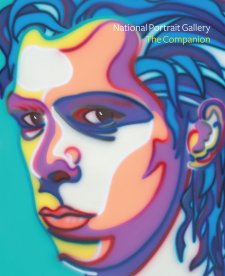

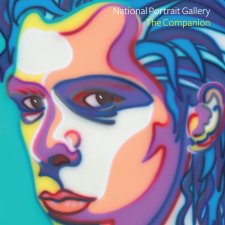
On one level The Companion talks about the most famous and frontline Australians, but on another it tells us about ourselves.

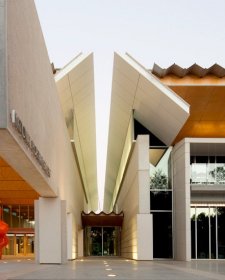
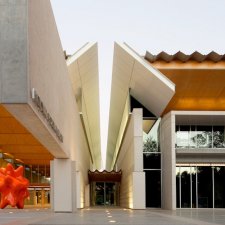
Visit us, learn with us, support us or work with us! Here’s a range of information about planning your visit, our history and more!
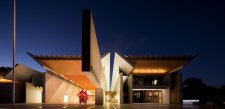
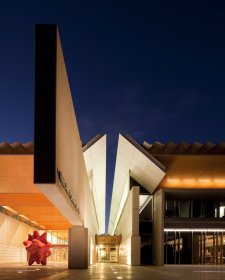
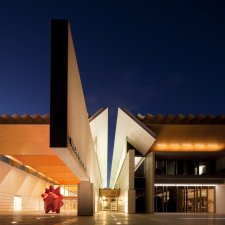
We depend on your support to keep creating our programs, exhibitions, publications and building the amazing portrait collection!